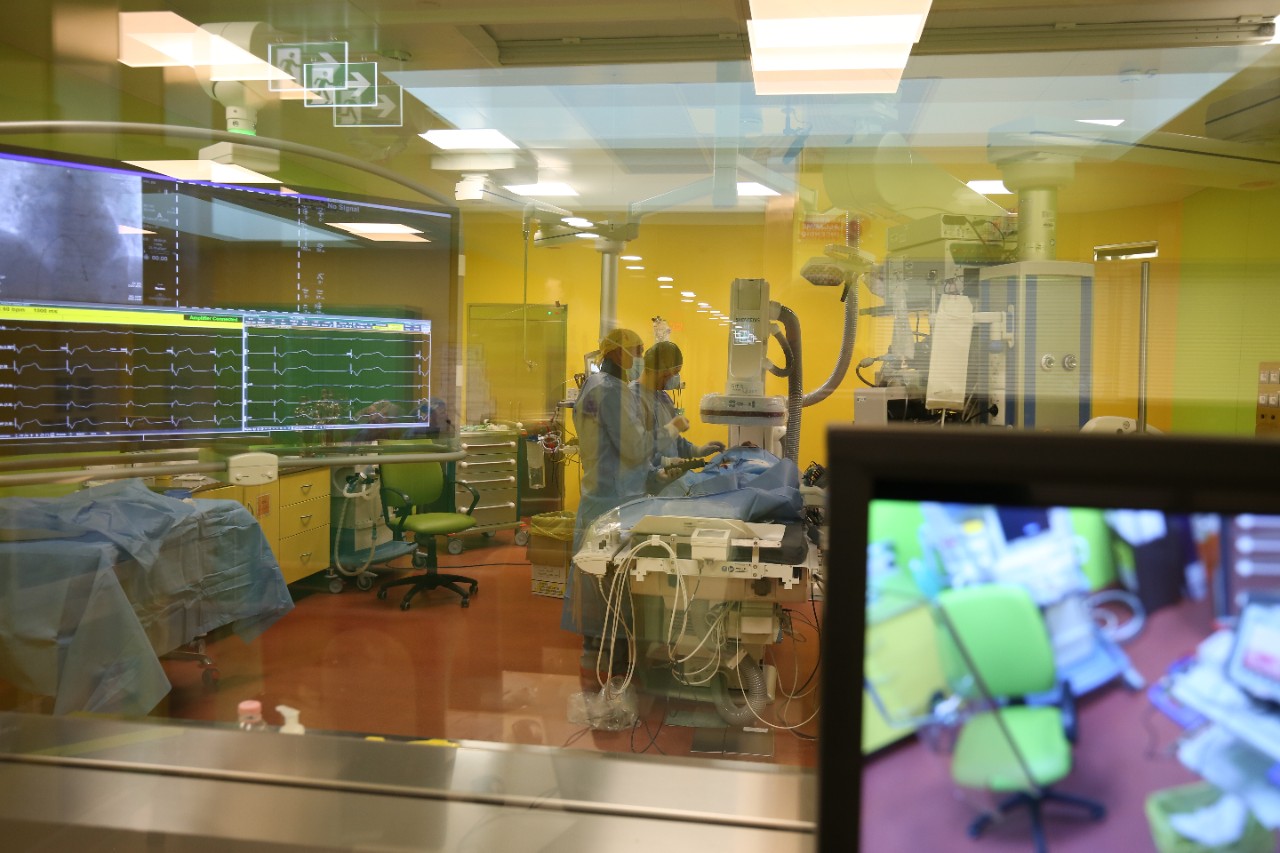Pure Pioneer
Professor Carlo Pappone, MD is putting Italian healthcare on the map
Gruppo Ospedaliero San Donato (GSD)
Sitting at the head of the table in a meeting room where one can hardly see the walls for all the framed journal contributions, news articles and letters of appreciation from an impressive array of scientific publications and associations spanning what seems like the entire globe, Dr. Carlo Pappone, Director of the Department of Arrhythmology at Policlinico San Donato is keen to discuss a career filled with world’s firsts and breakthroughs.
Pappone is a leading expert in arrhythmology having pioneered a number of technologies and procedures for treating a whole host of complex conditions. His field of expertise is of particular relevance to the Middle East as he explains how atrial fibrillation and ventricular tachycardia are particularly prevalent there due to the high rates of diabetes in the population.
Pappone continues, saying that his department has a great deal to offer the region. “First of all is the treatment of atrial fibrillation and heart failure. Most recently we can now treat Brugada syndrome which is well known in the region as they have many patients.
We are the only center in the world able to treat this disease.” Pappone cites the fact that most healthcare systems in the Middle East are still developing as being a major reason, alongside a lack of world class medical talent, that most arrhythmia remain untreated there.
While he is the man behind a method that cures Brugada syndrome, he is also widely acknowledged as having made a huge impact on the field of atrial fibrillation, having developed a technology that is still in use today for creating a 3D map of the heart in order to allow navigation by catheter.
As a world expert, Pappone is a draw for international patients. His treatment for brugada syndrome is particularly suited to medical travel he says, given the short duration of the hospital stay required. In general, patients that come for treatment for Brugada syndrome are admitted for a three day hospital stay.
When a patient is referred for treatment by Pappone and his team, he explains that they must first go through risk stratification. Once this is complete, “if the patient has inducible ventricular fibrillation, a defibrillator should be implanted - according to guidelines.” In such cases, he says that the patient must then wait a year until they can confirm the absence of the disease and then explant the device. However, if the fibrillation is not inducible during the risk stratification, then the ablation can be done directly, in the same session. Any followup can then be conducted in the patient’s home country.
Pappone’s impact on the medical field is felt far beyond his clinical practice. In addition to a great deal of publications, a great deal of the technologies used in his department were devised and developed by him and his team. “They are devised by us, developed by us, and sold to international companies.” His output includes everything from software to machines and methodologies used in clinical practice around the world. “Part of my team” he says, “is based here for clinical evaluation” with another team based in California working on technological development and the building of the prototypes. Another team develops the software used. “Every lab in the world” uses some technology he has had a hand in developing, says Pappone.
Professor Pappone’s influence over his field looms large, having been at the forefront of innovation for over twenty years. Arrhythmia is, he says, the future of cardiovascular medicine. The heart is, after all, “the only electrical organ we have and every disease should be approached in terms of that.” One thing is sure, whatever the future of cardiovascular medicine, Carlo Pappone will doubtlessly be on the frontline.


